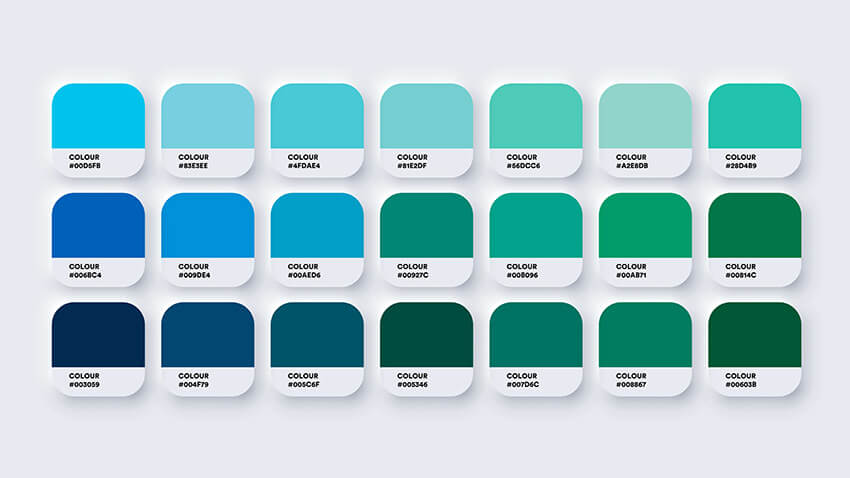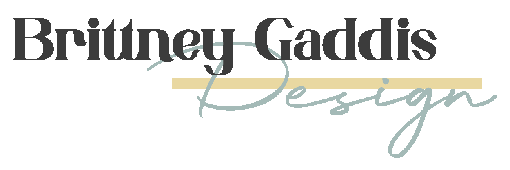Introduction to Color Psychology in Branding
According to Psychology Educator Kendra Cherry, Color psychology is defined as the study of how different colors affect human mood and behavior. Color psychology is a captivating field that delves into the subconscious emotions and perceptions evoked by different colors. It’s not just about aesthetics; it’s about strategically leveraging colors to create meaningful connections with your audience. By understanding the psychological effects of colors, brands can communicate their values, evoke specific emotions, and differentiate themselves in competitive markets.
When creating a visual brand for a client, it is crucial to select colors that appeal to your target audience. Naturally, colors evoke an emotional response, so when we select our palette we need to consider our audience. For example, the color Red is known to evoke a sense of danger, war, danger, strength, and passion. Marvel, our favorite superhero film company, naturally chose this color to use in their branding. As you can see, it doesn’t have quite the same effect in green, which suggests relaxation, growth, tranquility, and calmness.

The Influence of Colors on Consumer Behavior
Have you ever noticed how certain colors grab your attention more than others? That’s not by chance—it’s the result of careful consideration of color psychology in branding. Colors can influence consumer behavior, whether it’s encouraging impulse purchases, building trust and credibility, or fostering a sense of excitement and urgency. By tapping into these subconscious cues, brands can effectively engage their target audience and drive desired actions.
For example, yellow is considered the most eye-catching color. When working on my branding packages, I always add one color to the palette that can be used as an attention-grabber. This color should direct a customer’s attention where you want it to go — website call-to-actions, bold text on billboards, as a focal point on your logo, etc.
Understanding Color Associations
Colors are not universally perceived in the same way across different cultures and contexts. While certain colors may symbolize specific meanings in one culture, they may carry entirely different connotations elsewhere. For instance, while red signifies passion and energy in Western cultures, it’s associated with luck and prosperity in many Asian cultures. Therefore, it’s essential for brands to consider the cultural context of their target audience when selecting their color palette to ensure alignment with their values and preferences.

Choosing the Right Color Palette for Your Brand
Selecting the perfect color palette for your brand requires thoughtful consideration of various factors, including your brand’s personality, target audience, and industry norms. Whether you opt for bold and vibrant hues to exude energy and creativity or soothing pastels to convey a sense of tranquility and sophistication, each color choice should align with your brand’s identity and resonate with your audience on an emotional level.
Case Studies and Examples
To illustrate the effectiveness of color psychology in branding, let’s examine some real-world examples of brands that have successfully leveraged color to their advantage. From iconic logos to visually stunning websites, these case studies demonstrate how strategic color choices can leave a lasting impression on consumers and contribute to brand recognition and loyalty.
Color Psychology in Action
In the branding project for Respect Outside, a Human Resources company that deals exclusively with outdoor brands, it was crucial to evoke a sense of trust, teamwork, reverence, and safety within the brand. I chose a color palette of sage green, purple, and pink. Here’s why:
- Green: Harmony, Balance, Nature, Tranquility
- Purple: Harmony of the mind and emotions, peace of mind, calming of the nerves, wisdom
- Pink: Evokes a sense of calm, Soothing, Compassion
As you can see, not only do these colors create a fun and unexpected palette that has a lot of flexibility, but they also educate the viewer about the brand and evoke feelings associated with the brand. These feelings of safety, trust, and teamwork are likely to influence a potential customer to work with this brand over a competitor who may inappropriately use color psychology.

Practical Application: Implementing Color Psychology in Branding Projects
Now that we’ve explored the theory behind color psychology, let’s discuss how to translate these principles into actionable strategies for your branding projects. Whether you’re designing a logo, creating marketing materials, or revamping your website, I’m here to provide practical guidance and expert advice to ensure that your color choices effectively communicate your brand’s message and resonate with your target audience.
Measuring Success: Analyzing the Impact of Color Choices
As with any aspect of branding, it’s crucial to measure the effectiveness of your color choices and iterate based on feedback and data insights.
Once you’ve implemented your brand’s color palette, it’s essential to assess its effectiveness and iterate based on data insights. Let’s explore some practical methods for measuring the impact of your color choices on brand perception and performance.
1. Website Analytics: Dive into your website analytics to gauge how your color palette influences user behavior. Track metrics such as bounce rate, time spent on page, and conversion rates for different color variations of key elements such as call-to-action buttons, headlines, and background colors. For example, you may find that a vibrant button color leads to higher click-through rates, indicating its effectiveness in driving user engagement.
2. A/B Testing: Conduct A/B tests to compare the performance of different color variations in real-time. Create multiple versions of marketing materials, landing pages, or email campaigns with varying color schemes and monitor their performance metrics. For instance, test two different button colors in an email campaign and analyze which version generates higher click-through rates and conversions.
3. Customer Surveys and Feedback: Gather qualitative insights from your audience through customer surveys and feedback forms to understand their perceptions of your brand’s color palette. Ask specific questions about the emotional response elicited by different colors and whether they align with your brand’s messaging and values. For example, you might discover that certain colors evoke feelings of trust and reliability, while others convey excitement and innovation.
4. Social Media Engagement: Monitor social media engagement metrics to assess how your brand’s color palette resonates with your audience across different platforms. Analyze metrics such as likes, shares, comments, and brand mentions to identify trends and patterns in audience engagement. Pay attention to visual content with high engagement rates and identify common color themes that drive interaction and brand affinity.
5. Brand Recognition and Recall: Measure brand recognition and recall through brand awareness studies and market research. Assess whether your color palette contributes to brand memorability and distinguishes your brand from competitors in the minds of consumers. For example, conduct brand recall tests where participants are shown brand logos with varying color schemes and asked to recall the brands they associate with each logo.
By leveraging these measurement techniques, you can gain valuable insights into the impact of your brand’s color palette on consumer behavior, brand perception, and overall brand performance. Continuously monitor and analyze the data to refine your color choices and optimize your branding strategy for maximum effectiveness.

Future Trends in Color Psychology and Branding
As we look ahead to the future of branding, it’s clear that color psychology will continue to play a significant role in shaping consumer perceptions and driving brand success. From innovative uses of technology to emerging design trends, the possibilities are endless when it comes to leveraging color psychology to create memorable brand experiences that resonate with audiences around the globe.
Looking ahead to 2024, we anticipate several key trends shaping the world of visual branding. Sustainability will take center stage, with brands embracing earthy tones and eco-conscious design to convey their commitment to the environment. Minimalism will continue to thrive, emphasizing clarity and elegance through simplified color palettes. Technological integration will revolutionize brand experiences, with interactive color elements and augmented reality enhancing engagement. Cultural diversity and inclusivity will inspire brands to celebrate global perspectives, while emotional intelligence will drive personalized color choices based on psychographic targeting. As we navigate these dynamic trends, let’s embrace the colors of tomorrow and embark on a vibrant journey of creativity and innovation in branding.
I hope this informative exploration of color psychology in branding has provided valuable insights and inspiration for your future branding endeavors. Whether you’re embarking on a new project or seeking to revitalize your existing brand, remember that colors have the power to evoke emotions, convey messages, and leave a lasting impression on your audience. Embrace the magic of color psychology, and let’s work together to bring your brand vision to life!



Recent Comments